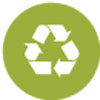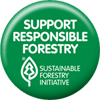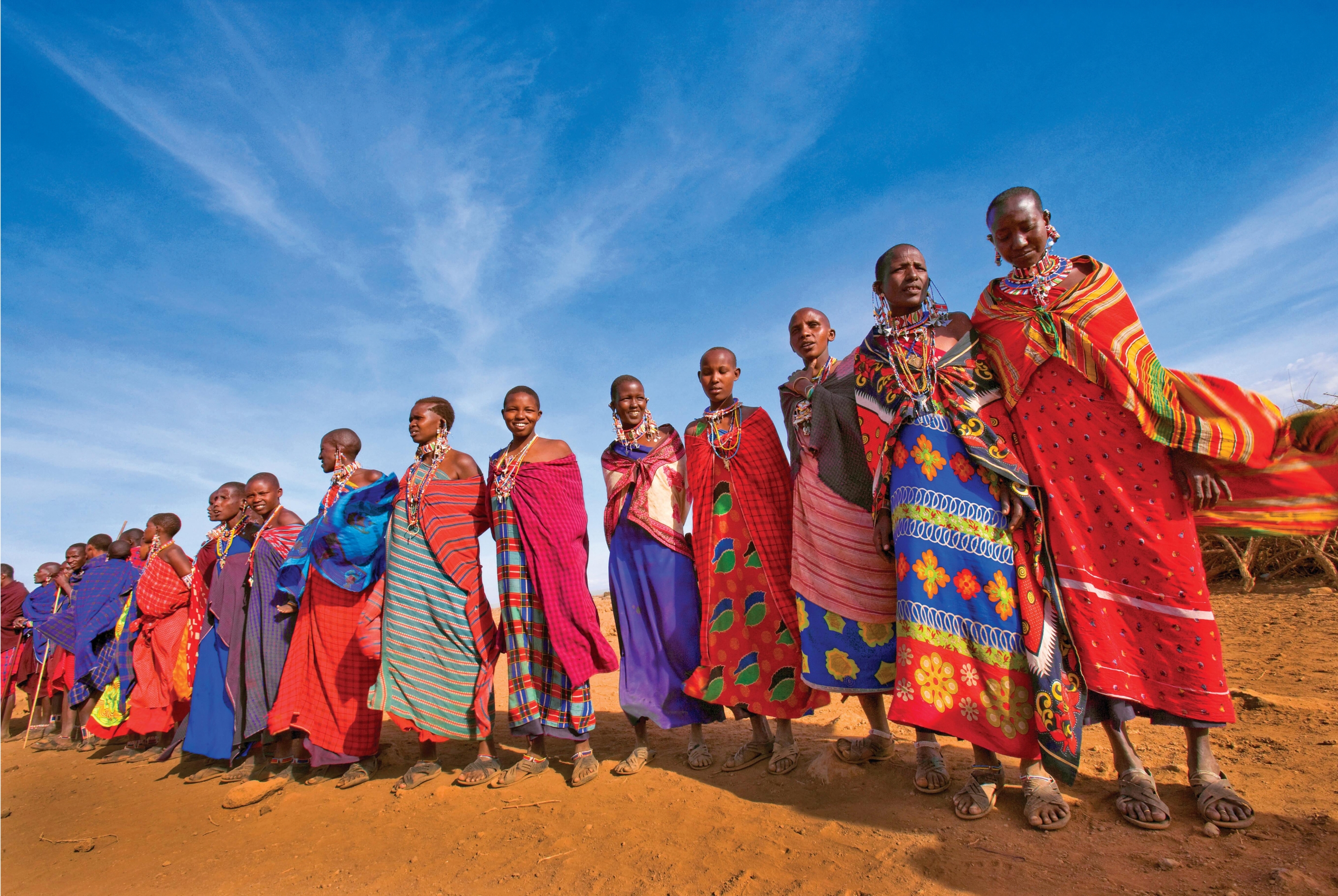Environmental Policy

Overseas Adventure Travel is committed to lessening our impact on the planet, while encouraging our suppliers and customers to do the same. As the recognized leader in travel for Americans 50 and older, we strive to be stewards of the environment at home and abroad through the efficient and sustainable use of natural and economic resources, and practices such as energy conservation and preservation of biodiversity. By doing this, we’ll help preserve the world we travel not only for our customers, but for the generations to come.
Overseas Adventure Travel is proud to be a signatory of the Glasgow Declaration on Climate Action in Tourism.

As a signatory of the Glasgow Declaration, we commit to deliver plans aligned with the pathways to cut tourism emissions in half over the next decade and reach Net Zero emissions as soon as possible before 2050.
Our initial goal as an organization is to address these key aspects of our environmental performance.
INITIAL AREAS OF FOCUS
- Recycling and pollution reduction in our Boston headquarters
- Design, production and printing in our mail, marketing and communication materials
- Paper procurement and usage
- Grand Circle Foundation -- Supporting environmental issues
I. RECYCLING AND POLLUTION REDUCTION IN OUR BOSTON HEADQUARTERS
O.A.T.'s policies and initiatives in this area are guided by the Three R’s: "Reduce, Reuse, and Recycle." With this in mind, we seek an efficient and environmentally sensible workplace. Our Boston office has taken the lead on the initiatives detailed below.
A. Reduce & Reuse in the Workplace
- Where possible and practical, we purchase office papers, packing and packaging materials made from recycled materials with post-consumer content.
- Utilize online systems for reports, projects and monitoring to reduce paper generation.
B. Deploy Recycling in Our Workplace
We investigate material usage and waste management procedures to reduce, reuse and recycle.
- Paper
- Corrugated cardboard
- Beverage cans and bottles
- Printing ink and toner cartridges
C. Promote/Advance Recycling
- Ensure that environmental labeling is clear with use of the recyclable symbol to identify paper and paperboard products made from fibers that, after use, are suitable for recycling.
II. DESIGN, PRODUCTION AND PRINTING IN OUR MAIL, MARKETING AND COMMUNICATION MATERIALS
We strive to design and print our marketing materials and other communications in an environmentally responsible manner, and we communicate our environmental expectations to our supplier(s). Wherever feasible, in designing and printing communications, we look at opportunities for source reduction. To this end:
A. We Reduce the Amount of Waste
- Adjust trim sizes of our publications and/or collateral in an effort to reduce waste.
- Test and use production methods that reduce print order overruns, waste allowances and in-process waste.
- Include overrun allowances in our contracts and specify that excess inventory be recycled.
- Work with our printers to explore using new printing techniques that help reduce chemical and paper waste, and emissions.
B. We Communicate Environmental Principles to Suppliers
- Review supplier companies’ environmental policies and practices, and encourage them to reduce, reuse, and recycle.
- Specify environmentally preferable materials to our suppliers.
III. PAPER PROCUREMENT AND CLEAN PRODUCTION
O.A.T. recognizes that improving forestry practices is an important component of environmental stewardship and sustainability. We strive to procure, use, and recover paper in a manner that helps to ensure the sustainable use of forests and other natural resources. In support of this principle:
A. Research & Invest in Sustainable Paper Practices
- We identify our "fiber supply chain" for forest products we use, such as paper for catalogs and other marketing materials, internal office paper, corrugated packaging, and wood used in retail products.
- Staff makes on-site visits to supplying paper mills to verify environment-related claims and to better understand related issues.
B. Respect Forest Ecosystems and Biodiversity
- We require that our paper suppliers have made a commitment to implementing sustainable forestry practices that protect forest ecosystems and biodiversity, as well as provide the wood and paper products our company needs.
- We specify that paper suppliers use third-party, verified traceability or chain-of-custody so that we know the origin of fiber in our paper.
- Our largest supplier is "Tri-certified" with Forest Stewardship Council® (FSC®), the Sustainable Forestry Initiative® (SFI®), and the Program for the Endorsement of Forest Certification (PEFC) standards. They undergo annual audits to maintain these certifications.
- We recognize the importance of preserving landscape integrity and encouraging forest restoration areas and forest landscapes that provide pathways for wildlife.
C. Encourage Sustainable Paper Procurement and Clean Production

- Wherever feasible, we require paper suppliers to provide annual reports on their environmental practices.
- Wherever feasible, we use vegetable-based inks. (Vegetable oils are considered a more usable raw material for ink production and are a renewable resource, unlike petroleum.)
- Recycled vegetable oils are biodegradable and release only 2-4 Volatile Organic Compounds (VOCs) into the atmosphere.
- We give preference to suppliers who are committed to sustainable practices throughout the "life cycle" of paper production, from forest to recycling, including pulp and paper mill performance.
- We have partnered with ecologically certified vendors for our inks and other print products, as well as companies who launder press rags and properly dispose of waste chemicals.
- Currently we adhere to standards maintained by:
FSC (Forest Stewardship Council)
PEFC (Program for the Endorsement of Forest Certification)
SFI (Sustainable Forestry Initiative)
IV. Grand Circle Foundation – Supporting Environmental Issues
Grand Circle Foundation was established in 1992 as a means of giving back to the world. O.A.T., through Grand Circle Foundation, helps support projects focused on water, conservation, and renewable energy.
Projects such as the Water, Sanitation, Hygiene (W.A.S.H.) initiative help improve the well-being of the local people in the areas to which O.A.T. travels. The W.A.S.H. initiative ensures that all schools and communities we visit have an adequate supply of clean water and toilets that meet or exceed local standards. To date, 95 percent of schools and 75 percent of villages have reached this goal. Access to safe water, adequate sanitation, and proper hygiene education can reduce illness and death, and increase socio-economic development leading to a reduction in poverty.
Renewable energy initiatives—installing solar lights in villages around the world, from Costa Rica to Zimbabwe, impacting over 36,000 people, for example—reflect our desire to protect the planet we share. Alnoba is the largest passive energy building in the Northeast and all the buildings on the property are now 100% powered by solar energy.
Grand Circle Foundation together with the Alnoba Lewis Family Foundation has pledged or donated $225 million throughout the world, including funds to support projects such as Bears Ears National Monument and the Society to Protect New Hampshire Forests in the US, NambiRand Nature Reserve in Namibia, the Rainforest Alliance in Central America, the Ocean Foundation, and many more organizations focused on ecological conservation.
